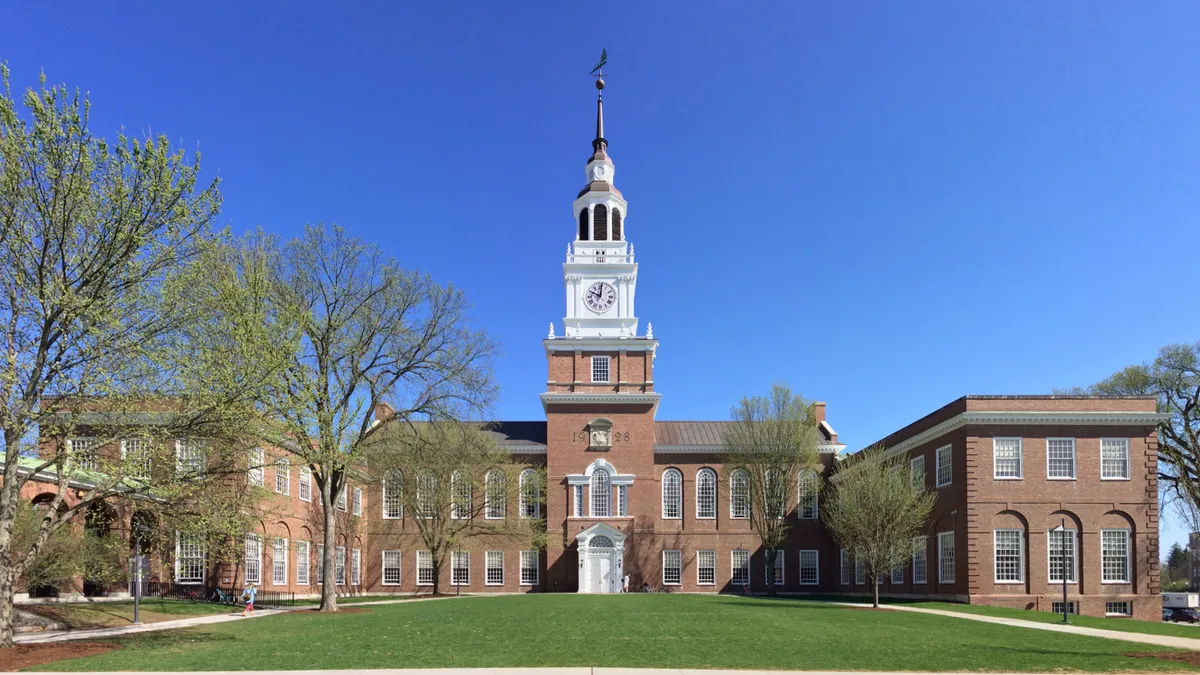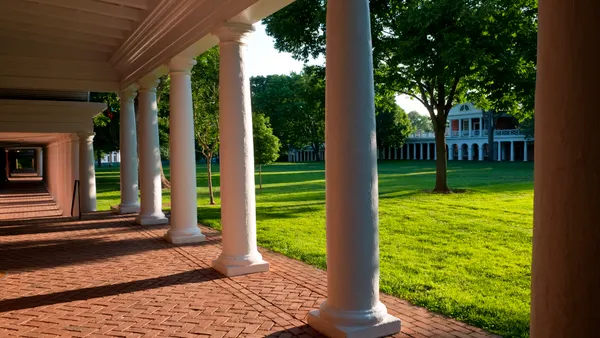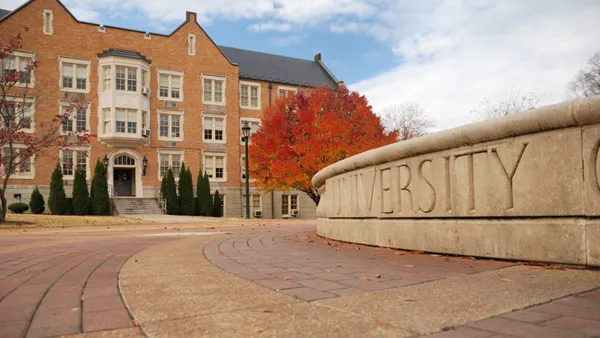Bill Hughes is the president and CEO of Education Design Lab, a nonprofit that seeks to improve the connections between education and the workforce.
The position gives him a valuable perspective on higher education. That’s because the nonprofit looks at learners' experiences using human-centered design, a process meant to help teams understand the perspective of people experiencing a problem to create effective solutions. Education Design Lab also espouses the values of equity and economic mobility.

Hughes studied systems thinking, which focuses on interactions among elements of complex systems. His past includes founding a career-skills training company, JobReady, experience in venture capital, and a vice president position at the education and publishing giant Pearson.
Hughes started as president of Education Design Lab in December. Then in August he took over as CEO from founder Kathleen deLaski, a transition that was planned when he was hired.
He answered questions about the organization and his priorities there.
This interview has been edited for clarity and brevity.
HIGHER ED DIVE: Which specific work is most exciting or interesting to you?
BILL HUGHES: The thing we're known most for, probably, right now, is our Community College Growth Engine Fund. That essentially is building micropathways and using the development of those micropathways — the design process — as transformative, either for a community college as an institution, to help it realign itself around the learners that they're trying to serve. Or maybe from a more systems standpoint, we're starting to ask, say, at the state level and region level: "Can you solve a regional problem that connects learning and work and the workforce dollars, in an ecosystem?"
The other piece is our work in learning design, education design. We would do design programs that are centered on what we call the new majority learner. The name comes from a recognition that more than half of the people in this country don't start their career with the credentials that they need to be successful in a well-paying career, which is a college degree.
We think that's a broken system. If more than half of your output is falling on the floor, that system is not working.
Can you say more about trying to improve the system for this new majority learner?
The new majority learner is not a monolith. They are made up of lots of different groups that all find themselves in the same situation, because higher education wasn't designed for them.
They might be single mothers. It might be workers who have to transition because their industry has collapsed and they've got to reskill. There are a number of different groups out there. All of them have the same challenge, and we put them at the center of that process and not only ask them what they want but actually codesign solutions with them so there's a much greater sense of dignity to the solutions, as well as efficacy.
What do you need to be successful?
We've found that, in order to connect the dots, there is some technology and some systems and some data that's needed.
We believe that there needs to be visibility between employers and job seekers in terms of what the skills are that are needed and what the skills are that are available. It may mean that job descriptions in clusters need to be aligned with programs that are being delivered at a college or community college or training programs. It might mean that there are new types of assessments that are needed to highlight skills.
We realized, in talking with employers, that there are a lot of skills that are needed that are the hard skills. We call that the stem of a T. But the bar of the T are all the soft skills. And we need to combine those two to really understand the competency someone has.
Those soft skills are really portable across a lot of different domain areas, a lot of different industries, a lot of different jobs.
How else are you looking at data?
The last piece is around data systems. The for-credit and noncredit side of colleges and community colleges don't speak to each other.
I was stunned in my last business to find that the noncredit side of the house didn't have any systems. What should we integrate with? They didn't own student data, and the most obvious way to grow enrollment, I thought, was to start with the noncredit side of people who say, "I want to learn something," and then give them an opportunity to bridge the gap to the for-credit.
People aren't doing that. There aren't even two systems, in many places, to tie together. So we have an initiative called the Data Collaborative, which is focused on tracking progress and outcomes and achievements of learners on the noncredit side, and tying that to digital wallets, so that the skills can be visible and persistent and discoverable.
That sounds easy, but I suspect finding a solution that works at scale is more complicated. And higher education is often criticized as complex. How complicated does it need to be?
I think you've got a couple of things conspiring against the sector. One is that, in an effort to be good stewards of tax dollars, there are requirements and bureaucratic, byzantine labyrinths that people have to go through to do the work.
Part of that is understandable. I'm a taxpayer. I want those dollars to go to good use. The other part, I think, is problematic, and it actually connects, I think, with equity issues that range from being paternalistic to being outright exclusionary.
I don't think people are generally working toward inequities in our day and age, especially in education, especially in community colleges. Those are people who go into the sector to serve. But they've inherited systems that have these inequities built in.
The second problem we face is, we have a lack of capacity for change in the sector. Changing it requires risk. If you're trying to comply with the requirements in the system, now you're trapped.
How do you improve the capacity to change?
One of the things people say to us, regardless of the type of project they're doing, is "Thank God you're here. You're actually making space for us to make the change. You're giving us permission to do it."
We create that space, and we bring, kind of, the sensibilities of how you actually take a cross-functional group who doesn't think about these things every day, and get them engaged.
We get them all focused on the target of their services, which are these new majority learners. And when you put them at the center, and you let their voices come out, it transforms the conversation.












